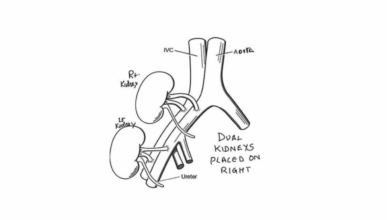Scientists create synthetic DNA in order to examine ‘architect’ genes
Washington: Researchers have created artificial Hox genes which plan and direct where cells go to develop tissues or organs using new synthetic DNA technology and genomic engineering in stem cells. Their findings confirm how clusters of Hox genes help cells to learn and remember where they are in the body.
Their findings, published in Science, confirm how clusters of Hox genes help cells to learn and remember where they are in the body.
Hox genes as architects of the body
Nearly all animals from humans to birds to fish have an anterior-posterior axis, or a line that runs from head to tail. During development, Hox genes act as architects, determining the plan for where cells go along the axis, as well as what body parts they make up. Hox genes ensure that organs and tissues develop in the right place, forming the thorax or placing wings in the correct anatomical positions.
If Hox genes fail through misregulation or mutation, cells can get lost, playing a role in some cancers, birth defects, and miscarriages.
“I don’t think we can understand development or disease without understanding Hox genes,” said Esteban Mazzoni, associate professor of biology at NYU and the study’s co-senior author.
Despite their importance in development, Hox genes are challenging to study. They are tightly organized in clusters, with only Hox genes in the piece of DNA where they are found and no other genes surrounding them (what scientists call a “gene desert”). And while many parts of the genome have repetitive elements, Hox clusters have no such repeats. These factors make them unique but difficult to study with conventional gene editing without affecting neighboring Hox genes.
Starting anew with synthetic DNA
Could scientists create artificial Hox genes to better study them, rather than relying on gene editing? “We are very good at reading the genome, or sequencing DNA. And thanks to CRISPR, we can make small edits in the genome. But we’re still not good at writing from scratch,” explained Mazzoni. “Writing or building new pieces of the genome could help us to test for sufficiency — in this case, find out what the smallest unit of the genome is necessary for a cell to know where it is in the body.” Mazzoni teamed up Jef Boeke, director of the Institute of System Genetics at NYU Grossman School of Medicine, who is known for his work synthesizing a synthetic yeast genome. Boeke’s lab was looking to translate this technology to mammalian cells.
Graduate student Sudarshan Pinglay in Boeke’s lab fabricated long strands of synthetic DNA by copying DNA from the Hox genes of rats. The researchers then delivered the DNA into a precise location within pluripotent stem cells from mice. Using the different species enabled the researchers to distinguish between the synthetic rat DNA and the natural cells of mice.”Dr. Richard Feynman famously opined, ‘What I cannot create, I do not understand.’ We are now a giant step closer to understanding Hox,” said Boeke, who is also a professor of biochemistry and molecular pharmacology at NYU Grossman and is the study’s co-senior author.
Studying Hox clusters
With the artificial Hox DNA in mouse stem cells, the researchers could now explore how Hox genes help cells to learn and remember where they are. In mammals, Hox clusters are surrounded by regulatory regions that control how the Hox genes are activated. It was unknown if the cluster alone or the cluster plus other elements was required for the cells to learn and remember where they are.The researchers discovered that these gene-dense clusters alone contain all of the information needed for cells to decode a positional signal and remember it. This suggests that the compact nature of Hox clusters is what helps cells learn their location, confirming a long-standing hypothesis on Hox genes that was previously difficult to test.
The creation of synthetic DNA and artificial Hox genes paves the way for future research on animal development and human diseases.
“Different species have different structures and shapes, a lot of which depends on how Hox clusters get expressed. For instance, a snake is a long thorax with no limbs, while a skate has no thorax and is just limbs. A better understanding of Hox clusters may help us to understand how these systems get adapted and modified to make different animals,” said Mazzoni.
“More broadly, this synthetic DNA technology, for which we have built a kind of factory, will be useful for studying diseases that are genomically complicated and now we have a method for producing much more accurate models for them,” said Boeke.








